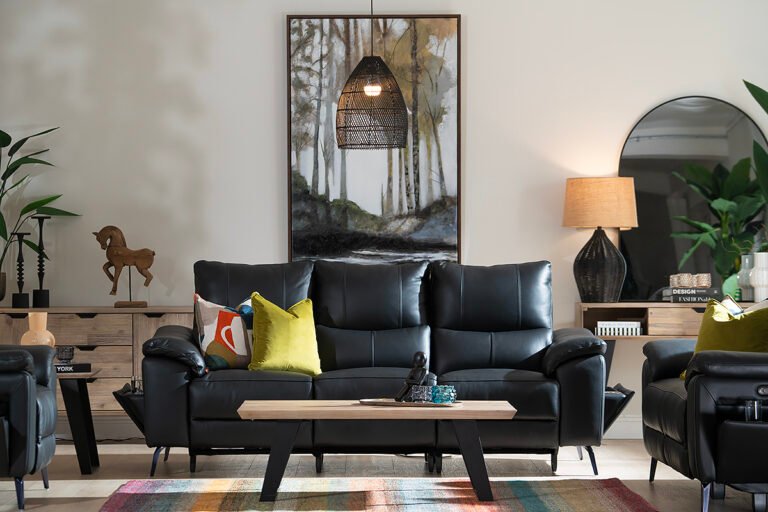Colors are not just visual stimuli; they evoke emotions, create atmospheres, and can even influence decisions. In the realm of modern website design, the choice of colors plays a pivotal role in shaping user experience and brand perception. Imagine landing on a website that uses vibrant reds to ignite excitement or calming blues that invite trust. The impact is immediate and profound.
As you embark on creating your own digital space, understanding how color works is essential. Whether you’re designing for a trendy startup or an established business looking to refresh its image, selecting the right color palette can set the tone for everything that follows. From attracting visitors to guiding their journey through your content, colors are powerful tools at your disposal.
In this article, we’ll delve into how you can choose colors effectively for modern website design—helping you craft an online presence that’s visually stunning and aligned with your brand’s identity. Let’s dive deep into the world of color!
Understanding the Psychology of Color
Color has a profound impact on human emotions and behaviors. Each hue carries its own psychological weight, influencing how we perceive and interact with the world around us.
For instance, red often evokes feelings of passion or urgency. It can stimulate appetite, making it popular in food-related websites. In contrast, blue conveys trustworthiness and calmness. Many financial institutions use this color to establish reliability.
Yellow is associated with optimism and energy but can be overwhelming if overused. Green signifies growth and tranquility, making it ideal for environmental brands or wellness-focused sites.
Understanding these associations helps designers make informed choices that resonate with their audience. By tapping into the emotional responses elicited by different colors, you can create a site that not only attracts visitors but also fosters lasting connections through intentional design decisions.
The Role of Color in Website Design
Color plays a crucial role in website design, influencing user experience and engagement. It can evoke emotions and drive actions. The right colors guide visitors through content seamlessly.
Different hues have unique psychological effects. For example, blue often conveys trust, while red can spark excitement or urgency. Designers must choose colors that align with their branding and target audience.
A well-thought-out color palette creates harmony across web elements. This consistency helps users navigate the site effortlessly, promoting a positive impression of the brand.
Additionally, contrasting colors improve readability and accessibility. They ensure that essential information stands out to all users, regardless of visual ability.
In modern website design, color is more than aesthetics; it’s a powerful tool for storytelling and connection. Properly applied color schemes enhance not just appearance but also functionality.
Choosing a Color Scheme for Your Website
Choosing a color scheme for your website is a critical step in modern website design. Start by identifying the emotions you want to evoke in your visitors. Colors can create feelings of trust, excitement, or calmness.
Consider using the 60-30-10 rule as a guideline. This means 60% of your site should be your dominant color, 30% a secondary color, and 10% an accent color. This balance helps maintain visual interest without overwhelming users.
Think about accessibility too. High contrast between text and background colors ensures readability for all users. Tools like Adobe Color can help visualize combinations before making decisions.
Don’t shy away from experimenting with different palettes until something clicks. Your choice should reflect both functionality and aesthetics while resonating with your target audience’s preferences.
Using Color to Communicate Your Brand Identity
Color is a powerful tool for expressing your brand’s personality. It speaks to your audience without using words. Each hue resonates differently, evoking emotions and associations that can align with your values.
For instance, blue often conveys trustworthiness and professionalism, making it popular among financial institutions. In contrast, vibrant reds can stimulate excitement and passion, ideal for brands looking to energize their audience.
When selecting colors, consider what feelings you want to evoke. Think about how these shades will resonate with your target demographic. A cohesive color palette not only enhances visual appeal but also reinforces recognition across all platforms.
Consistency in color usage strengthens brand identity over time. Whether on social media or the website itself, recognizable colors make an impact that lasts beyond first impressions.
Tips for Incorporating Color into Your Website Design
Start with a primary color that resonates with your brand. This will be the foundation for your palette.
Next, explore complementary colors to create contrast. These can highlight important elements like buttons or calls to action.
Don’t forget about neutral tones. They balance vibrant colors and help content stand out more clearly.
Consider using shades and tints of your chosen colors. This adds depth without overwhelming visitors’ eyes.
Be mindful of accessibility; ensure sufficient contrast between text and background for readability.
Test how colors appear on various devices. What looks great on a desktop may not translate well to mobile screens.
Keep it simple. A limited color palette often leads to a cleaner, more cohesive design that enhances user experience without causing distraction.
Case Studies: Examples of Effective Color Choices in Modern Website Design
Color choices can make or break a website’s appeal. Companies like Airbnb harness soft pastels, creating a welcoming and friendly vibe that resonates with travelers looking for comfort. Their palette enhances user experience by promoting calmness.
Dropbox takes a different approach with bold blues and whites. This scheme communicates trustworthiness while ensuring clarity in navigation. The colors support their brand message of simplicity in file sharing.
On the other hand, Spotify uses vibrant greens against dark backgrounds to energize users. This combination reflects creativity and passion for music, inviting visitors to explore more without distraction.
These examples illustrate how strategic color use influences perception and engagement on modern websites. Each choice aligns seamlessly with the brand’s identity, demonstrating effective design principles in action.
The Importance of Color in Website Design
Color is not just a decoration; it’s a powerful tool in modern website design. It can evoke emotions, influence user behavior, and even drive conversions. The right colors can create an inviting atmosphere or establish credibility.
When users land on your site, their first impression often hinges on color. This visual element sets the tone for their experience. Bright hues may energize visitors, while softer shades can promote calmness.
Additionally, color enhances readability and navigation. A well-chosen palette ensures that text stands out against backgrounds. This clarity helps guide users through the content seamlessly.
Moreover, consistency in color reinforces brand identity. When you use specific colors consistently across platforms and materials, it builds recognition and trust among your audience. Color shapes perceptions and cultivates connections with your target market—making it essential for impactful website design.
Factors to Consider When Choosing Colors for a Modern Website
When selecting colors for a modern website, it’s crucial to think about your target audience. Different age groups and demographics respond differently to color choices. Research their preferences.
Next, consider the industry you’re in. A financial institution might benefit from blues and grays that convey trustworthiness, while a creative agency may thrive on vibrant hues for energy and excitement.
Accessibility shouldn’t be overlooked either. Ensure that text contrasts well with background colors for readability. This is essential for inclusivity.
Trends play a significant role as well; stay updated with current design trends but avoid following them blindly. Aim for timelessness alongside modernity.
Think about how colors will look across devices and screens. Consistency is key in maintaining brand identity across various platforms during the user experience journey.
Popular Color Schemes for Modern Websites
When it comes to modern website design, color schemes can set the tone and mood. One popular choice is the monochromatic scheme. This approach uses varying shades of a single color, creating a sleek and sophisticated look.
Another favorite is the complementary scheme, where contrasting colors enhance each other’s vibrancy. Think blue paired with orange or red alongside green—these combinations grab attention and create visual interest.
For those seeking calmness, analogous color schemes work wonders. By using colors that sit next to each other on the color wheel, these designs feel harmonious and balanced.
Minimalist palettes featuring neutral tones mixed with bold accents are trending. This technique allows for easy navigation while making key elements pop without overwhelming users. Each option creates its unique vibe; choosing wisely can elevate your site’s overall aesthetic significantly.
Conclusion
Color plays a vital role in modern website design. It influences perception, evokes emotions, and communicates messages without words. Choosing the right colors can enhance user experience and drive engagement.
Understanding color psychology is essential for any designer. Each hue carries its unique meaning—blue often conveys trust, while red can evoke passion. By aligning your color choices with your brand’s values, you create a cohesive identity that resonates with users.
Selecting an effective color scheme involves considering harmony and contrast to ensure readability and accessibility. Popular schemes like monochromatic or complementary combinations can elevate aesthetics while maintaining functionality.
Incorporating color thoughtfully into layouts enhances navigation and guides visitors through content seamlessly. Case studies show how brands effectively use colors to captivate audiences and reinforce their identity.
When designing for the web today, remember that every choice matters—from shades to saturation levels. The key lies in creating a visually appealing environment that reflects who you are as a brand while engaging your audience effectively.
By embracing these principles of modern website design, you set the stage for success online. Your website becomes not just visually striking but also meaningful—a true representation of what sets your brand apart in today’s digital landscape.







